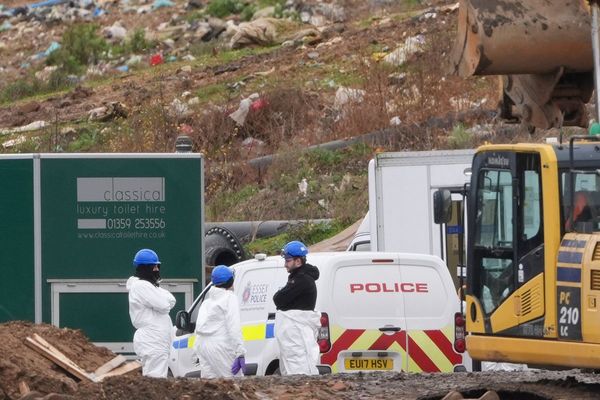On the doorstep of an industrial city, Trevor Turner patrols his local beach keeping watch over vulnerable sea turtles.
"You look around and it's like, wow, this is special," he said.
For 13 years Mr Turner has doggedly worked to protect the species, earning him the nickname "turtle man" in the small community of Southend on Curtis Island, off the central Queensland coast.
The efforts of volunteers like him combined with conservation programs have led to a rise in the population of flatback turtles on the island, the Department of Environment and Science (DES) said.
Col Limpus, chief scientific officer with the threatened species operation, said it was a sign of hope amid the growing impacts of climate change and man-made threats.
"The good news is that the nesting population for Curtis Island over the last about 25 years is actually on the increase," Dr Limpus said.
A day in the life of a turtle volunteer
Flatback turtles are the most common species to nest and hatch on Curtis Island, but Mr Turner said there were "very rare" visits from loggerheads and greens.
From about October to March, he checks a 1.5-kilometre stretch of beach morning and night to mark nests, record information on the species and location, and watch hatchlings erupt.
"Sometimes they nest in peculiar places, so when I mark them with two white stakes, they [community members] know not to drive over those," Mr Turner said.
"There are times when [checking nests] it's the middle of the night, it's blowing 30 knots, when it's not very pleasant."
But Mr Turner said being part of the conservation effort was rewarding and often surreal.
"The best part is when you've got 50 eggs in there and they all come out and they all go the beach — you get that buzz," he said.
The survival rate for turtle hatchlings is about one in 1,000, the department said.
"There's nothing worse than seeing a nest that nearly all of them have died for differing reasons, that's pretty demoralising," he said.
Breeding population increase
The information volunteers record is put in a database for the DES threatened species team, who also visit sites during the season's peak to tag and track turtles.
"15 years or so ago, typically we were getting about 70 flatbacks a summer nesting on Curtis Island," Dr Limpus said.
About 2012, Dr Limpus was "quite concerned" when numbers declined to about 30 turtles a year.
"Now, in the last couple of years, they've jumped back up to what they used to be," he said.
Dr Limpus has tracked nesting numbers and predation since his first visit to the island in 1969, but more in-depth, rigorous monitoring has been taking place since 1993.
"The total population of flatbacks associated with Curtis Island is actually increasing," he said.
"Individual turtles don't nest every year.
"We had a period where they were skipping more years between breeding and hence, we got fewer coming in, and it looks like it's returning to the normal."
Predation, light pollution and microplastics
With another nesting season underway, Dr Limpus said there had been good progress with the once "significant issue" of fox predation.
"The overall management on the island for feral predators like pigs and foxes and dogs and so on, is being well-managed from a turtle perspective," he said.
Dr Limpus said his team's new report on long-term turtle management, funded by the island's gas companies, found light pollution was "significantly disrupting the ocean finding behaviour" of hatchlings on Curtis Island.
"The cumulative effect of the light that's coming from the city of Gladstone, plus the industrial developments, it's been progressively developing across the years," he said.
"It's so bright that even when you've got a full moon, their ocean-finding behaviour is being disrupted."
Despite growing challenges including turtle feminisation and hatchlings ingesting microplastics, Dr Limpus remains hopeful.
"I'm optimistic that our turtles will probably be coping, but we've got a lot to learn about how the environment is functioning in the face of the greater variability we're seeing with the weather," he said.







